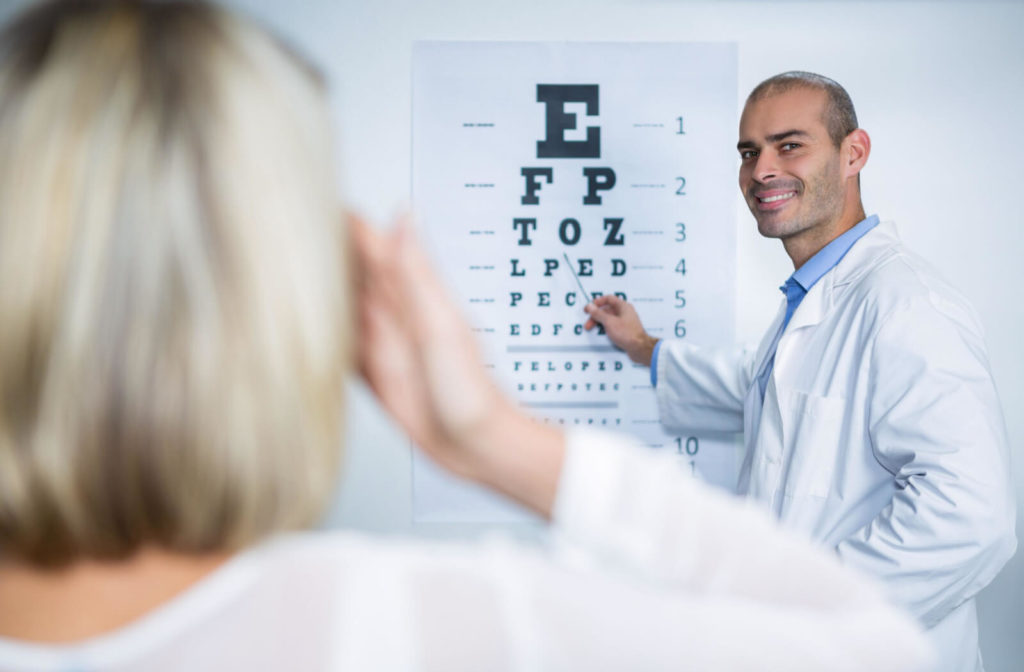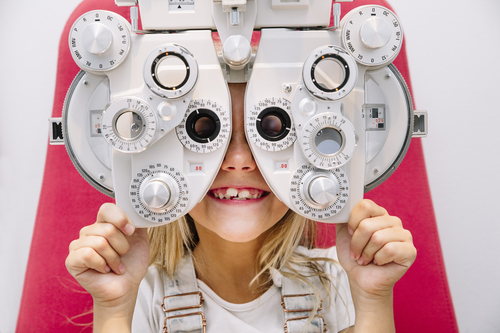How an Eye Doctor Can Transform Your Vision Health in Chino
Wiki Article
Discovering the most up to date Technical Developments in Optometry and What They Mean for Eye Doctors
In the ever-evolving field of optometry, recent technological innovations are reshaping just how experts approach eye treatment. From the precision of Optical Comprehensibility Tomography to the nuanced insights used by AI-driven diagnostic devices, these innovations are establishing brand-new criteria in patient evaluation and treatment. Teleoptometry is positioned to redefine access, guaranteeing that know-how transcends geographical limitations. As these innovations penetrate the technique, eye doctors are encountered with the challenge of welcoming these devices to improve person end results. Yet, the question continues to be: just how will these technological changes redefine the roles and responsibilities within the profession?Innovations in Diagnostic Equipment
Advancing the area of optometry, advancements in analysis devices have reinvented the means eye treatment experts analyze and identify eye conditions and visual impairments. The previous years has actually seen substantial technical developments, making it possible for more thorough and exact analyses.One more secret innovation is the intro of advanced corneal topography systems, which map the surface curvature of the cornea with precision. These tools are particularly useful for fitting get in touch with lenses and detecting corneal disorders. Digital retinal imaging has actually changed conventional ophthalmoscopy, using in-depth, scenic sights of the retina that assist in extensive visual evaluations.
The development of wavefront aberrometry has actually additionally been critical, making it possible for the analysis of refractive mistakes with unparalleled precision (Optometrist Chino). This technology aids in tailoring rehabilitative lenses and improving medical results for refractive surgical procedures. Jointly, these diagnostic improvements equip optometrists to supply exceptional individual care, making sure very early intervention and tailored therapy techniques, inevitably enhancing visual health and wellness outcomes
AI in Person Monitoring
Building on the structure of innovative diagnostic devices, the unification of man-made knowledge (AI) in person administration stands for a transformative leap for optometry. AI systems are progressively employed to improve efficiency, accuracy, and customization in individual treatment. By assessing vast amounts of information, AI can determine patterns and forecast potential ocular problems, allowing optometrists to tailor treatments better. This capacity is critical in handling persistent eye illness such as glaucoma and diabetic person retinopathy, where very early discovery and continual monitoring are essential.Additionally, AI-driven systems help with structured patient interactions and management procedures. Automated scheduling, virtual assessments, and customized follow-up plans not only improve individual complete satisfaction but likewise optimize time administration for professionals. These systems can triage patients based on the urgency of their problems, making certain that those in crucial need receive punctual focus.
Moreover, AI enhances decision-making by providing eye doctors with evidence-based referrals and treatment pathways. By incorporating data from electronic health documents, AI tools supply insights that educate clinical choices, decreasing the risk of errors and improving patient results. As AI remains to evolve, its function in individual management will likely expand, reshaping the landscape of optometric treatment.
Advances in Retinal Imaging
In the world of optometry, retinal imaging has observed exceptional technical advancements that are improving diagnostic abilities and patient care. Technologies such as Optical Coherence Tomography (OCT) and fundus digital photography have reinvented just how eye doctors visualize and assess the retina.Enhanced imaging modalities like OCT angiography are additional refining diagnostic accuracy. This non-invasive strategy maps blood circulation in the retina, offering vital insights into vascular health and wellness without the requirement for color shots. Furthermore, flexible optics innovation is being incorporated into retinal imaging systems to fix ocular aberrations, providing unprecedented photo quality. Such developments promote the recognition of min retinal adjustments that might symbolize condition progression.
Moreover, developments in expert check over here system are boosting retinal imaging by allowing automatic analysis of large datasets. These systems assist eye doctors in identifying patterns a sign of pathology, thus improving diagnostic accuracy and performance. Jointly, these advancements are changing retinal imaging right into a cornerstone of modern eye treatment, enhancing results and broadening therapeutic opportunities.
Teleoptometry's Growing Duty
Teleoptometry is progressively coming to be a crucial part of eye care, driven by advancements in digital communication and diagnostic devices. As optometry embraces electronic change, teleoptometry helps with remote appointments, permitting optometrists to extend their services past traditional borders. This is especially beneficial in rural and underserved locations where access to specialized eye treatment is typically minimal. By leveraging high-resolution video clip conferencing and progressed retinal imaging, eye doctors can carry out detailed eye tests from afar, ensuring timely diagnosis and therapy.The combination of expert system (AI) further enhances teleoptometry, enabling the evaluation of visual information and aiding in the detection of ocular conditions such as glaucoma and diabetic person retinopathy. AI-powered formulas can swiftly interpret complicated imaging information, providing optometrists with useful understandings that strengthen medical decision-making.
Furthermore, teleoptometry sustains continuity of treatment via seamless assimilation with digital health and wellness records (EHRs), allowing eye doctors to maintain detailed client backgrounds. When consulting with different practitioners., this makes sure that individuals obtain customized and constant treatment also.
Despite these advantages, challenges remain, consisting of ensuring information safety and security and taking care of individual assumptions. However, teleoptometry stands for a substantial stride towards even more accessible, efficient, and patient-centered eye care. As modern technology progresses, its function is poised to increase why not find out more better.

Future Trends in Eye Treatment
A myriad of cutting-edge patterns is established to reshape the future of eye care, driven by technological innovations and the progressing requirements of patients. One considerable trend is the assimilation of expert system (AI) in diagnostics, which guarantees to enhance the precision and performance of eye examinations. AI algorithms can analyze vast amounts of data from retinal photos, potentially detecting problems like diabetic retinopathy and glaucoma earlier than typical techniques.Moreover, individualized medicine is obtaining grip in optometry, with genetic screening notifying customized therapy plans. This approach intends to enhance patient end results by tailoring interventions to individual hereditary profiles. Wearable innovation, such as wise get in touch with lenses, is additionally coming up, supplying real-time monitoring of intraocular stress or sugar degrees, hence supplying continual insights into systemic and eye wellness.
The fostering of augmented fact (AR) and digital fact (VIRTUAL REALITY) in training and person education and learning is one more emerging fad. These modern technologies provide immersive experiences that can improve understanding and abilities both for optometrists and individuals. As these trends evolve, eye doctors need to remain abreast of technical improvements to provide sophisticated care, making sure better client end results and complete satisfaction in the vibrant landscape of eye care.
Final Thought

Collectively, these analysis innovations encourage eye doctors to provide premium individual treatment, ensuring early treatment and customized treatment strategies, inevitably enhancing visual wellness end results.

As these technologies proceed to advance, eye doctors should adapt and incorporate them into technique, inevitably optimizing process performance and elevating the requirement of eye treatment delivered to clients.
Report this wiki page